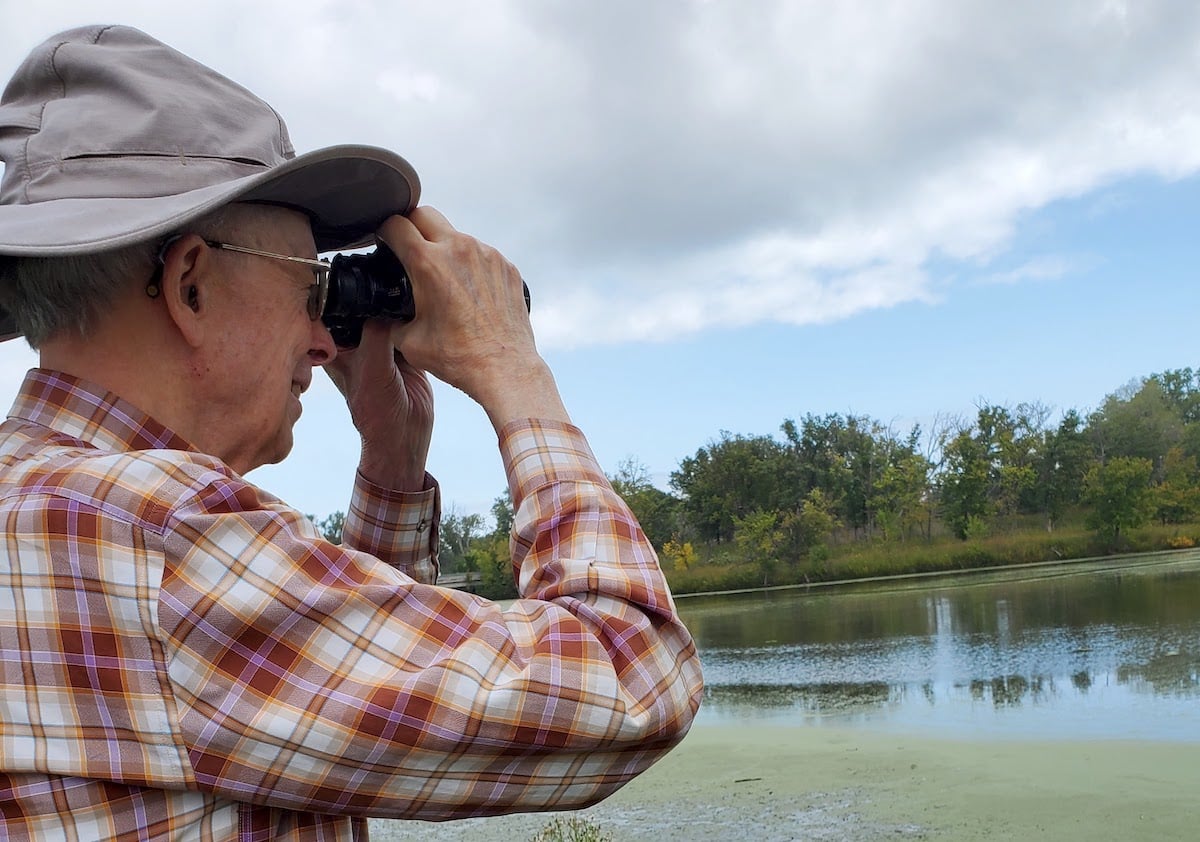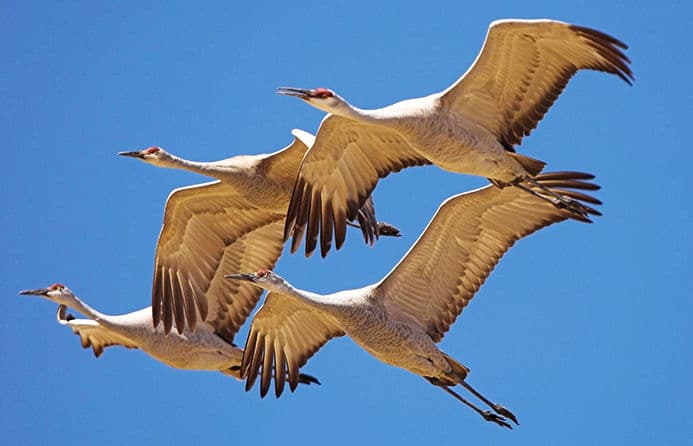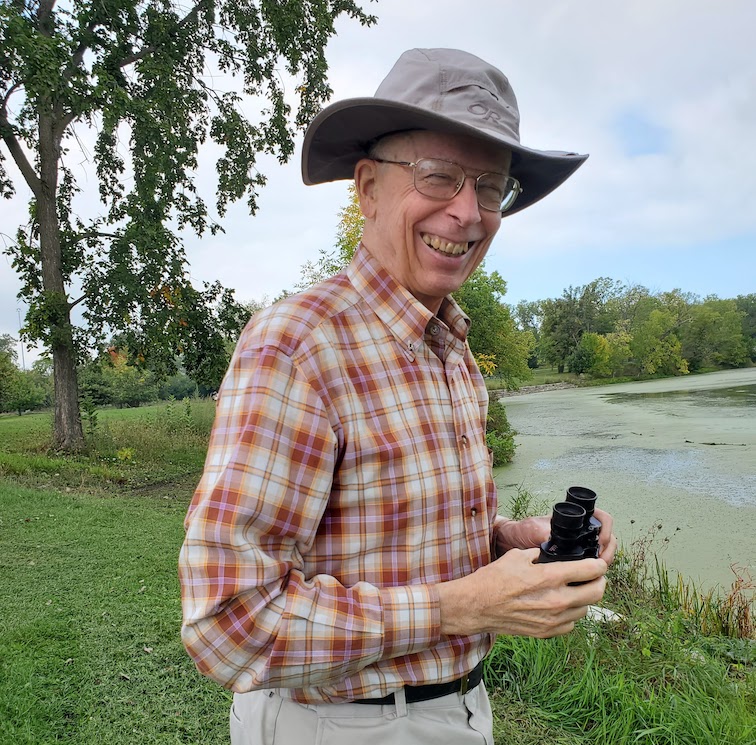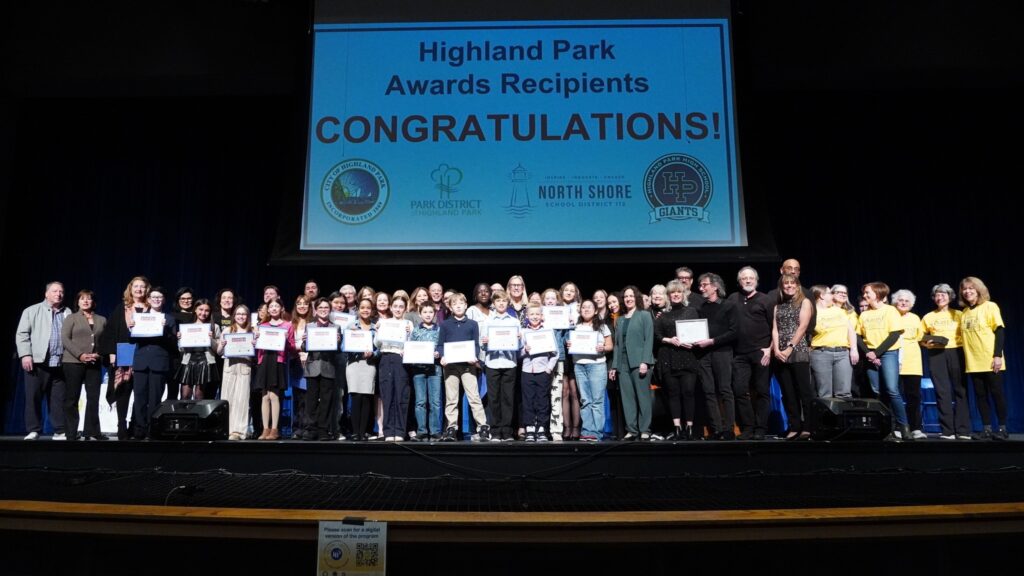
Glencoe resident is a champion for cranes — like ones often seen migrating through the North Shore
As Hall Healy spoke recently at the Skokie Lagoons about his lifelong love of birds, especially cranes, he kept his binoculars close at hand.
Every so often, he’d pick them up to gaze fixedly at birds out on the water and identify them: a cormorant balancing on an outcropping in the lake, a male mallard duck paddling its way across the water, a tiny sandpiper almost invisible atop a half submerged log.
The Glencoe resident’s love of birds is a major part of his life. It’s one that goes back to his parents, who were also birders — and at least as far as the time he corrected one of his elementary school teacher’s bird identification (“She said it was a bluebird and I apparently told her, ‘No, it’s an indigo bunting.’”)
He currently chairs the Audubon Society’s Great Lakes Region advisory board and is also a former director of the Baraboo, Wisconsin-based International Crane Foundation. And it’s in his work with the foundation, now celebrating its 50th anniversary, that he has poured his passion for cranes. He’s traveled across the United States and to countries around the globe to further the foundation’s mission: to conserve the world’s 15 crane species and their diverse landscapes of flyways, watersheds and ecosystems.
Healy and other foundation staff, colleagues and a network of partners in countries as diverse as Cambodia, Kenya, Russia, and even North Korea, work to protect cranes by improving their ecosystems, in part by also improving the lives of people living in them as well. The work is necessary; 10 of the 15 crane species are either critically endangered, endangered or vulnerable.

In North America, the foundation maintains a nonmigrating flock that comprises cranes of all species in more than 300 acres at its Baraboo headquarters, which hosts thousands of people every year for visits and educational programs.
What is it about cranes that attracted Healy’s attention and love? As at least a partial answer, he played an audio clip of a crane call, and said hearing that call as the birds wing their way across the sky “is a magnetic, magical experience.”
Here in the United States, he has seen hundreds of thousands of sandhill cranes fly over and land in fields near Kearney, Nebraska, which bills itself the sandhill crane capital of the world: “To see all these birds funneling through the place, it’s an experience I treasure.”
Healy is a trove of information about the birds he loves. He said that archaeological finds indicate that all crane species originated in what is now North America; although only two species, Sandhill and Whooping Cranes, now call it home. Cranes fly to and nest in areas all around the world. Depending on the species, birds range in size from 4 to 22 pounds, with wingspans of 5 to 8 feet.
The birds figure into many cultures, he said, generally in a positive way.
“There are a lot of traditions featuring cranes — Native Americans, Korean, Chinese. You see it on women’s kimonos in Japan, you see it in (Beijing’s) Forbidden City,” Healy said.
After retiring in the 1990s from a career in marketing, Healy took advantage of travel in the former Soviet Union and China becoming easier. During that period, he also attended a talk by Dr. George Archibald, co-founder of the International Crane Foundation, and he became part of the organization.
Cranes migrate from breeding grounds to locations where they winter; some of those locations are as far-flung as Siberia, and at least one species of crane migrates through the Himalayas. On Chicago’s North Shore, people can also view Sandhill cranes as they make their annual migrations south, Healy said. Migration season runs roughly between September and December, he said, adding that he’s heard their call in the skies above his home well into December.

In Cambodia, the foundation worked with partners on the ground to help save reeds in wetlands used by cranes from overuse by villagers. Villagers’ use of the reeds to weave baskets threatened the cranes’ ecosystem. To help both them and the cranes, a foundation team taught the villagers to use a different type of reed, one that wouldn’t destroy the habit
Healy has seen the birds in flocks in Korea’s DMZ, and foundation colleagues have helped the birds in North Korea, for instance by helping farmers in one region of eastern North Korea build a plant to turn animal manure into better fertilizer for their rice fields, and not coincidentally provide better feeding for the birds. (The foundation’s nonpartisan and nonpolitical stance allowed it to operate in the very secretive country, he said.)
Each case illustrates how the foundation seeks to find ways in which cranes and humans can live together in a safer environment for both. Healy said the environmental dangers that face cranes and other birds also face humans:
“To me, the central issue is that humans, birds, all animals, need nature for survival. We all need fresh water and clean air.”
To learn more about cranes and the International Crane Foundation, visit the foundation’s web page. Further general news about birds can be found at the Audubon Society web page.
The Record is a nonprofit, nonpartisan community newsroom that relies on reader support to fuel its independent local journalism.
Become a member of The Record to fund responsible news coverage for your community.
Already a member? You can make a tax-deductible donation at any time.

Kathy Routliffe
Kathy Routliffe reported in Chicago's near and North Shore suburbs (including Wilmette) for more than 35 years, covering municipal and education beats. Her work, including feature writing, has won local and national awards. She is a native of Nova Scotia, Canada.


